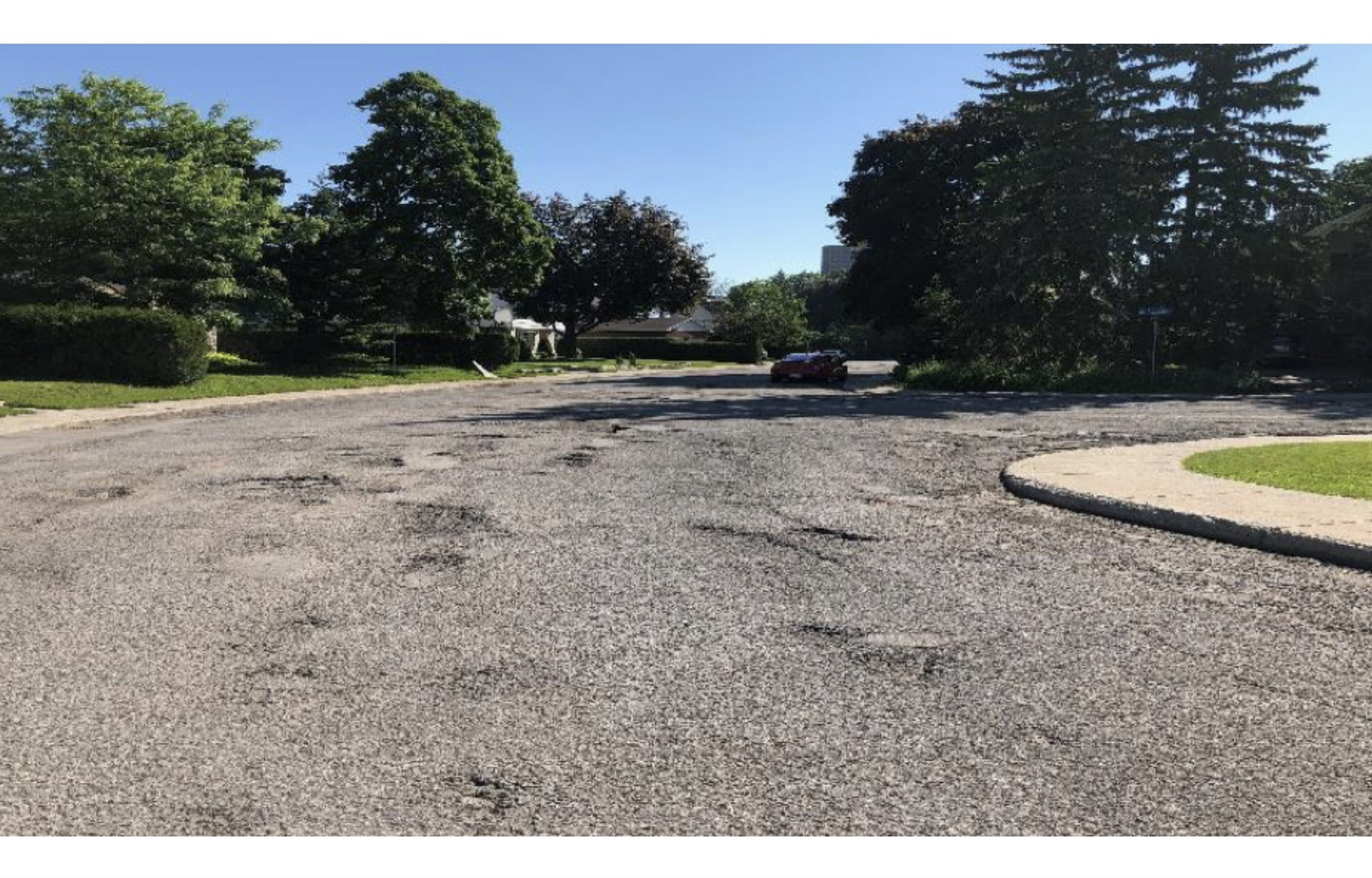Gatineau in a game of catch-up with road network
Taylor Clark
Years of underfunding have left Gatineau’s municipal road network to erode rapidly. But it seems that no matter how much money was thrown at the growing situation, the state of the infrastructure would continue to plummet.
“There has not been enough money that has been put into our road network, which means that we end up with a much faster deterioration of what we can see on our roads compared to what it could have been. But despite this, even if there had been additional investments to this day, we would not have caught up,” Masson-Angers district councillor Mario Aubé told reporters.
The state of the roadways has been no secret, but the crumbling situation was put in black and white for elected officials during a presentation in a Comité plénier meeting on May 21.
The latest data from 2023 painted a new portrait of the estimated $1.9 billion road network, claiming 40 per cent or 550 kilometres of the roadways were below the desired service levels. Every year around 20 additional kilometres are added to the sections falling below service levels. Another 370 kilometres or 27 per cent of the network was at the of the life cycle, a value which has almost doubled since 2015.
While data from 2020 and 2023 appeared to show some stabilization with short-term interventions, filling potholes will not alone resolve the situation in the medium to long term.
Additional funds are required, and some have already been put in place by council, notably the $24 million bonus envelope at a rate of $6 million per year from 2022 to 2025 which was later extended until 2028. Another one-off bonus envelope of $27.4 million was adopted by council in the respective amounts of $7.4 million, $10 million, and an additional $10 million in 2023, 2024, and 2025. But the effects of these additional investments would not be reflected until the next roadway inspection in 2026.
The last three years have allowed an average of nearly 30 kilometres of renewal work to be carried out. The improvement envelopes should make it possible to achieve around 40 additional kilometres between 2024 and 2026, resulting in 13 kilometres per year. Gatineau anticipated this would assist in partially stabilizing the degradation of the network.
To ensure the current state was maintained, the need for annual intervention was estimated at approximately 50 kilometres. Depending on a 25 to 50-year catch-up period, Gatineau would need the annual interventions of 10 to 20 kilometres on top of the 50 kilometres, but this comes at the cost of major dollars.
“Just to maintain what we currently have; we would have to put $80 million per year in our roads. And if we want to improve our roads overall for 30 years, we would have to spend $110 million per year,” said Aubé. “It’s almost impossible for a city to put in that much, but we have to realize that we’ll still have to put in a little more.”
Without the renewal of the bonus envelopes, while also taking in inflation, the City expected the period from 2027 to 2029 to see below-average interventions as well as reach less than 50 per cent of the target for maintaining the level of service.
“It’s clear that there are difficult choices to make,” said interim mayor Daniel Champagne. “We realize that the necessary budgets mean that it now costs us 45 per cent more than it cost us in 2019. This means that all the investments we make not only do not necessarily increase the number of kilometres of asphalt but do not necessarily even guarantee that we will be able to ensure the maintenance of our infrastructure.”
With the importance citizens place on road infrastructure, Champagne noted it was a worrying situation and would add the significant challenge of prioritizing come budget time.
Photo caption: Gatineau elected officials get a glimpse of a roadway in very bad condition as per the pavement condition index during the state of the road network presentation on May 21.
Photo credit: Screenshot of État du reseau routier – Auscultation 2023 presentation to Comité plénier on May 21






